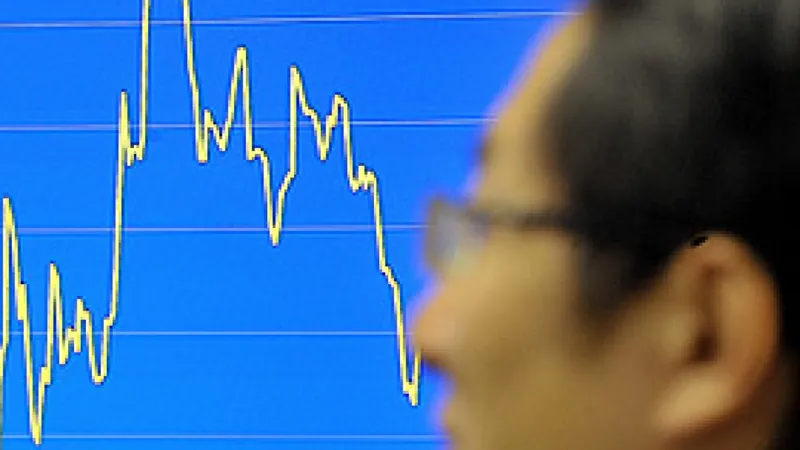
Donald Trump's Tariff War: A Looming Crisis for China's Economy?
2025-04-09
Author: Noah
The Tariff Storm Hits China Hard
Brace yourselves! At the stroke of midnight EST, the trade tariffs introduced by President Donald Trump unleashed a financial storm, and no nation is feeling the brunt quite like China. With an astounding 104% levy now placed on Chinese goods entering the US, the economic landscape has shifted dramatically.
As the US navigates negotiations with its other trade partners, Beijing is left grappling with the shocking reality that all exports to the States will cost over double what they did merely two months ago. In retaliation, China swiftly raised its tariffs to a hefty 84% on American imports.
The Trade War Escalates!
Market reactions have been dramatic, with stock indices plunging as investors brace for the global ramifications of this escalating trade war. Trump's condemnation of other nations—especially China—as exploitative has set the stage for his protectionist policies aimed at reviving American manufacturing and safeguarding US jobs.
A Timeline of Tariff Increases
The timeline of events has been dizzying. On February 3, Trump first imposed an extra 10% tariff on Chinese goods. By March 5, this rate had doubled to 20%, and an additional increase on April 2 saw it leap to a staggering 54%. China, not to be outdone, retaliated on April 4 with a reciprocal 34% tariff on US exports.
Trump's Ultimatum: More Tariffs or Else!
Continuously raising the stakes, Trump threatened another round of tariffs—an additional 50%—should China refuse to relent on its recent increases. "If China doesn't back down by April 8, be prepared for more pain," he declared confidently on social media.
China's Stance: Firm and Unyielding
China's response has been assertive. The Ministry of Commerce stated that it possesses the determination and resources to counteract these tariffs, insisting that the US's actions would not rectify its own economic troubles but rather destabilize financial markets and heighten inflation within the US.
How Will This Impact China's Economy?
Despite the tensions, the US and China remain intertwined economically. Last year, the US imported a staggering $438.9 billion worth of Chinese goods, which represents about 3% of China's total GDP. However, as Goldman Sachs predicts, these new tariffs may slash China's GDP growth by up to 2.4% this year.
Immediate forecasts put China's growth at 4.5%, a figure that falls short of the official government target of 5%. UBS analysts are even grimmer, projecting a mere 4% growth rate by 2025, assuming some fiscal measures are enacted.
China's Preparedness: The Government's Game Plan
In response, Chinese officials are taking measures to mitigate market shocks and stabilize the economy. Premier Li Qiang has advocated for confidence in their ability to weather external economic disturbances.
Moreover, several public investment firms have pledged to bolster equity markets in an attempt to stave off financial panic.
What Lies Ahead for China?
To counteract the fallout from these tariffs, experts suggest that Beijing may ramp up domestic stimulus and strengthen ties with alternative trade partners to reach its growth goals. Potential strategies include reducing interest rates and expanding public investments.
Furthermore, analysts predict that China might subtly enhance its exports to developing nations through initiatives like loans and debt relief, while a depreciation of the yuan could serve to lower export costs and mitigate tariff impacts.
Despite concerns surrounding rising government debt and economic stability, many analysts argue that the Chinese economy is equipped to endure these challenges, countering the narrative of its impending collapse. Jayati Ghosh, an economics professor, emphasizes that the focus should rather shift towards the vulnerabilities lurking within the US economy.









 Brasil (PT)
Brasil (PT)
 Canada (EN)
Canada (EN)
 Chile (ES)
Chile (ES)
 Česko (CS)
Česko (CS)
 대한민국 (KO)
대한민국 (KO)
 España (ES)
España (ES)
 France (FR)
France (FR)
 Hong Kong (EN)
Hong Kong (EN)
 Italia (IT)
Italia (IT)
 日本 (JA)
日本 (JA)
 Magyarország (HU)
Magyarország (HU)
 Norge (NO)
Norge (NO)
 Polska (PL)
Polska (PL)
 Schweiz (DE)
Schweiz (DE)
 Singapore (EN)
Singapore (EN)
 Sverige (SV)
Sverige (SV)
 Suomi (FI)
Suomi (FI)
 Türkiye (TR)
Türkiye (TR)
 الإمارات العربية المتحدة (AR)
الإمارات العربية المتحدة (AR)